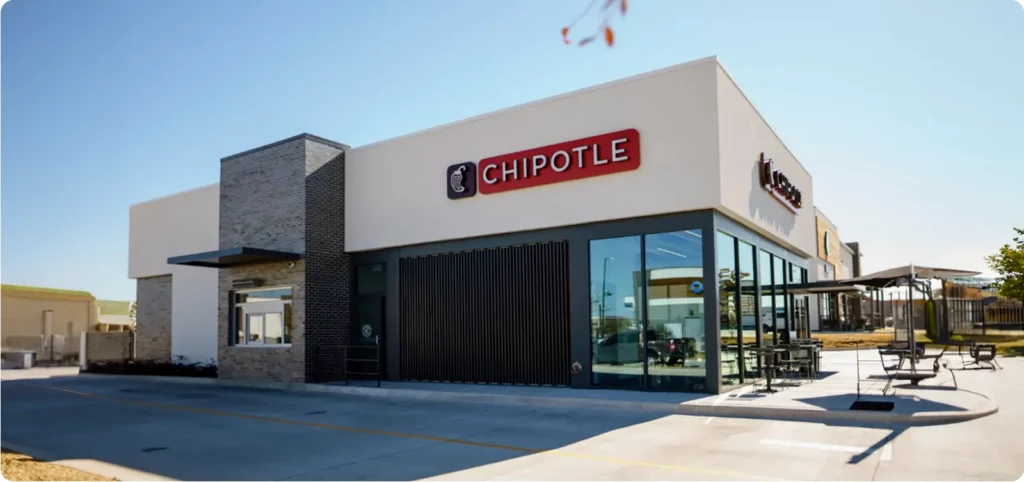As technology redefines every industry, the food sector is no exception. The blend of artificial intelligence (AI) with restaurant operations has changed the industry, reshaping how restaurants operate. Let’s dive into artificial intelligence in the food industry, exploring its transformative impact and spotlighting pioneering restaurants that are making use of AI to improve the efficiency of their operations and deliver unparalleled dining experiences.
The Culinary Revolution: How AI is Changing the Food Industry
Gone are the days when dining out solely revolved around getting a tasty meal and attentive service. The addition of AI has propelled the food industry into a dynamic space where innovation meets gastronomy. From front-of-house to back, AI is revolutionizing every aspect of restaurant operations.
One of the most clear impacts AI has had is the personalization of dining experiences. AI-powered recommendation systems analyze customer data, from past orders to dietary preferences, crafting tailor-made suggestions that cater to individual tastes. This personalization can delight patrons and drive loyalty, as restaurants demonstrate their commitment to understanding and serving their customers.
Reimagining Efficiency: Examples of AI-Powered Restaurants
Chipotle

Ever the trend-setter, Chipotle has made many innovations over the years, and they’ve been looking to improve efficiency with AI. In 2022, they started to test an “AI Kitchen Assistant” named Chippy from Miso Robotics to fry and season their tortilla chips. You may remember Miso Robotics from their burger-flipping robot, Flippy. White Castle installed Flippy into many of its stores.
Later in 2022, Chipotle began testing a new kitchen management system by PreciTaste. This uses AI and machine learning to track inventory and forecast demand. The system checks ingredients in real-time and tells the crew how much to prep, cook, and when to start cooking.
Starbucks
Way back in 2020, Starbucks began a technology initiative called Deep Brew, a “broad suite of AI tools to help elevate every aspect of the business and the in-store and customer experience.” Their plan was to use AI to automate many processes, like inventory, supply chain logistics, and replenishment.
Starbucks prides itself on customer connections, so it almost seems strange to bring a machine on board. However, Starbucks has been wise to use it in ways that are “invisible to customers.” Kevin Johnson, CEO of Starbucks at the time, was eager to see the algorithm working to anticipate the unique needs of each of their 32,000 unique stores. So, with AI behind the scenes, partners at the stores will be able to spend more of their time doing what’s most important to Starbucks: customers and coffee.
How AI is Changing Front of House
AI Phone Answering
As we move forward, AI-powered restaurant phone answering systems are set to revolutionize the way restaurants handle reservations and customer inquiries. Advanced voice recognition and natural language processing technologies will enable AI-driven phone systems to interact with callers in a human-like manner. These systems will not only take orders and reservations but also answer questions about menu options, special dietary requests, and more. The result? Faster responses, reduced call wait times, and happier customers.
AI Text Ordering
Text ordering for restaurants is becoming increasingly popular. With it, customers can place their orders through text messages. AI algorithms will analyze these text orders, ensuring accuracy and processing them swiftly. And, AI can provide order tracking updates and even suggest add-ons or special deals. Text ordering not only reduces errors but also offers a convenient, contactless way for customers to enjoy their favorite restaurant meals.

How AI is Changing Back of House
Inventory Management
Managing inventory is important for restaurant profits. AI-powered inventory management systems can predict demand based on historical data, ensuring that restaurants always have the right amount of ingredients on hand. This reduces food waste and ensures that popular items are always available.
Staffing and Scheduling
Scheduling kitchen and waitstaff efficiently is a complex task for restaurant management. AI-driven labor scheduling systems can consider factors like historical sales data, weather forecasts, and special events to create optimal work schedules. This ensures that there is enough staff during peak hours and reduces labor costs during slower periods.
Predictions and Forecasting
AI will play a pivotal role in demand forecasting for restaurants. Advanced algorithms will analyze historical sales data, seasonality, local events, and even weather conditions to predict customer demand accurately. With this foresight, restaurants can adjust their inventory and staffing levels accordingly, ensuring that they meet customer needs while minimizing waste and costs.

A Future of Innovation: The Business Benefits of AI Integration
As the food industry continues to grapple with challenges such as fluctuating ingredient costs, labor shortages, and evolving consumer preferences, AI is emerging as a potent solution. For restaurant owners and managers, embracing AI offers numerous benefits:
- Enhanced Operational Efficiency: AI-powered inventory management and demand forecasting optimize resource allocation, reducing wastage and costs.
- Consistency and Quality: AI-driven cooking systems ensure that dishes are prepared consistently, maintaining the highest standards of taste and presentation.
- Real-time Insights: AI analytics provide actionable insights into customer preferences, allowing restaurants to adapt quickly and tailor their offerings.
- Increased Revenue: Personalized experiences and efficient operations lead to higher customer satisfaction and loyalty, translating into increased repeat business and positive word-of-mouth.
Overcoming Hurdles: Embracing Artificial Intelligence in the Food Industry
While the benefits of AI integration are evident, there might be reservations about its implementation. One common concern is the potential for job displacement. However, AI’s role is to augment human capabilities, not replace them. Staff can focus on creative culinary endeavors and fostering guest relationships, while AI handles repetitive tasks.
Furthermore, the perceived complexity of adopting AI can deter some businesses. But many AI solutions are designed to be user-friendly and easily integrated with existing systems, ensuring a smooth transition.
Embrace the Future: Seize the AI Advantage
The fusion of AI with the restaurant business model marks a significant turning point in the food industry. From custom dining experiences to efficient operations, the potential for improvement is immense. Restaurants that embrace AI are not just staying ahead of the curve; they are setting new standards for innovation and customer satisfaction.
The age of artificial intelligence in the food industry is already here, and its impact is nothing short of amazing. The businesses that choose to use AI stand to reap big rewards, from improved operational efficiency to unparalleled customer experiences. As diners become more tech-savvy and choosy, AI is the key to thriving in this competitive industry. So, take a leap into the future, embrace AI, and get ready to reshape dining as we know it.
Ready to learn more about HazlVoice: Pro, Hazlnut’s affordable text message ordering system? Click here to learn more and schedule a demo with our team!






